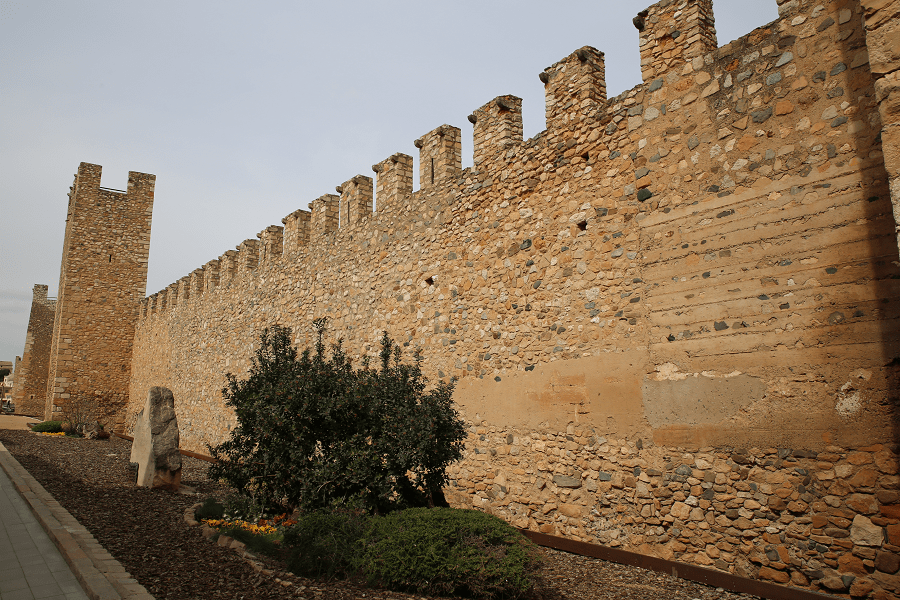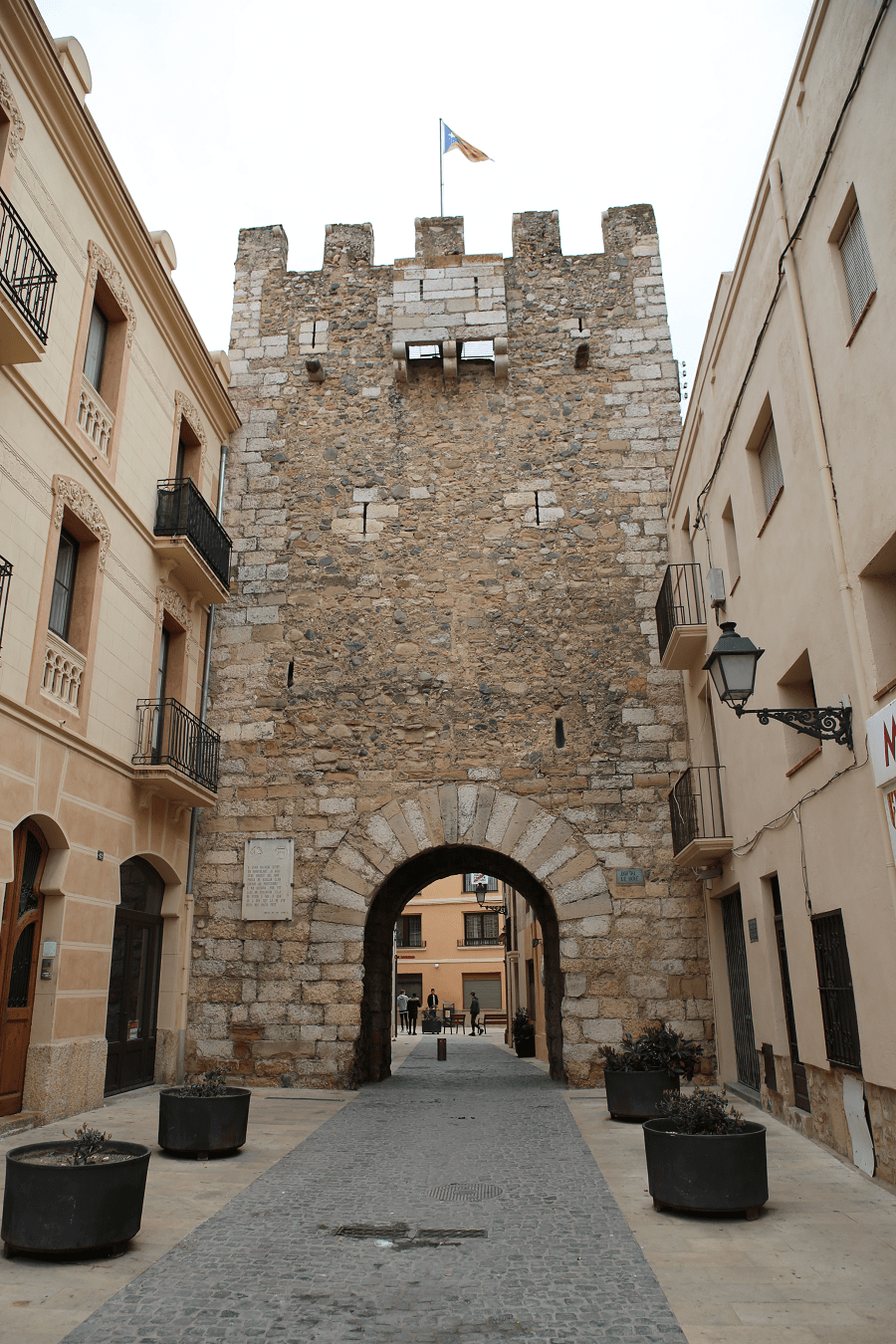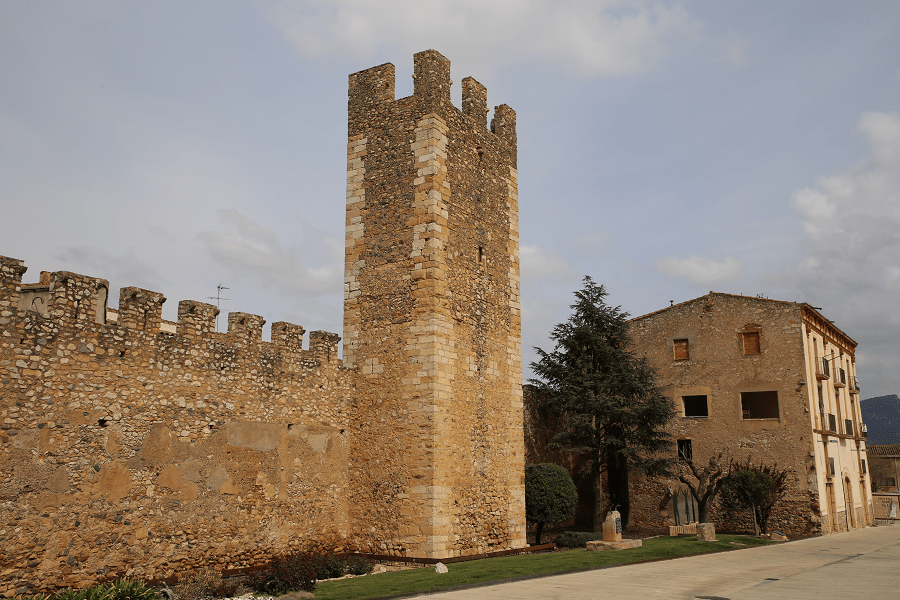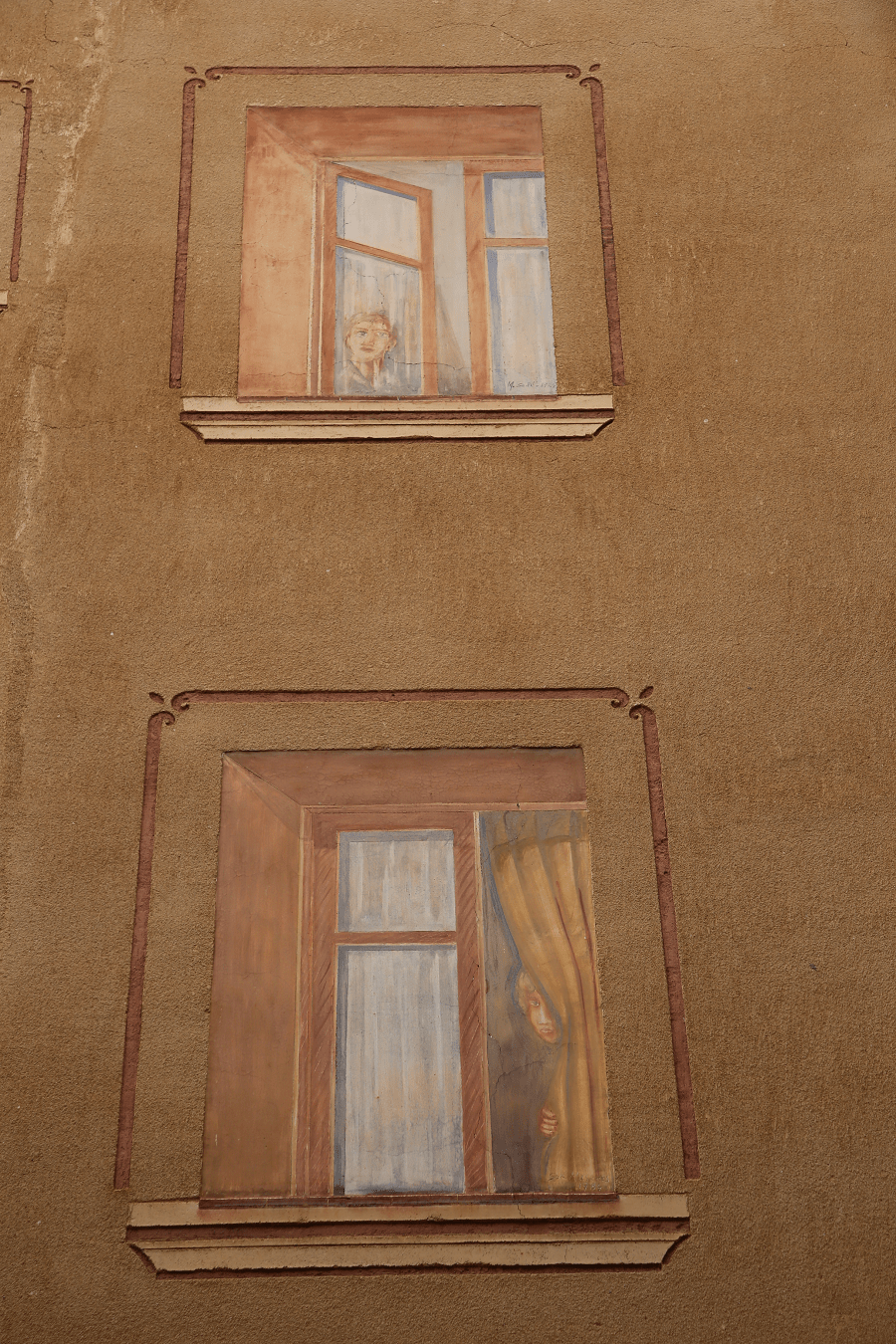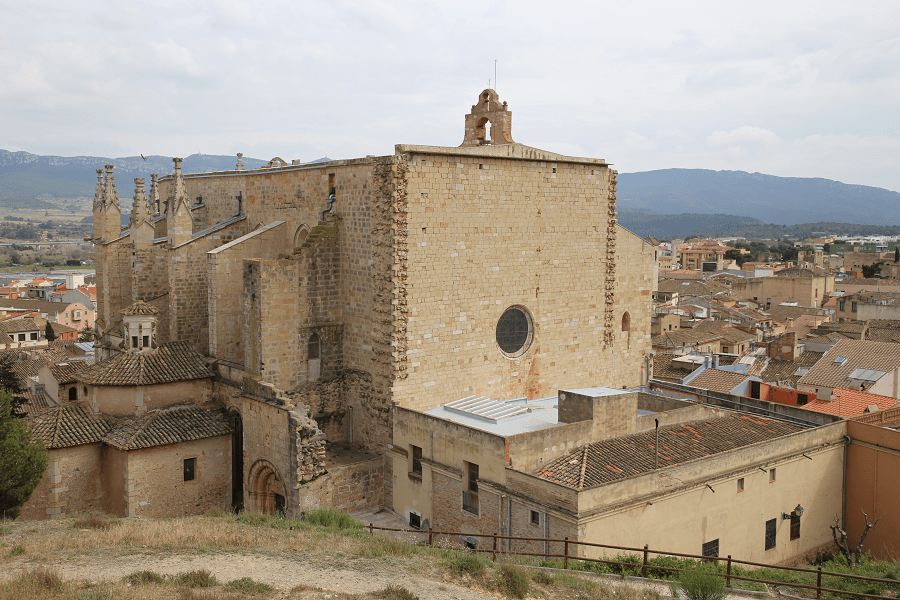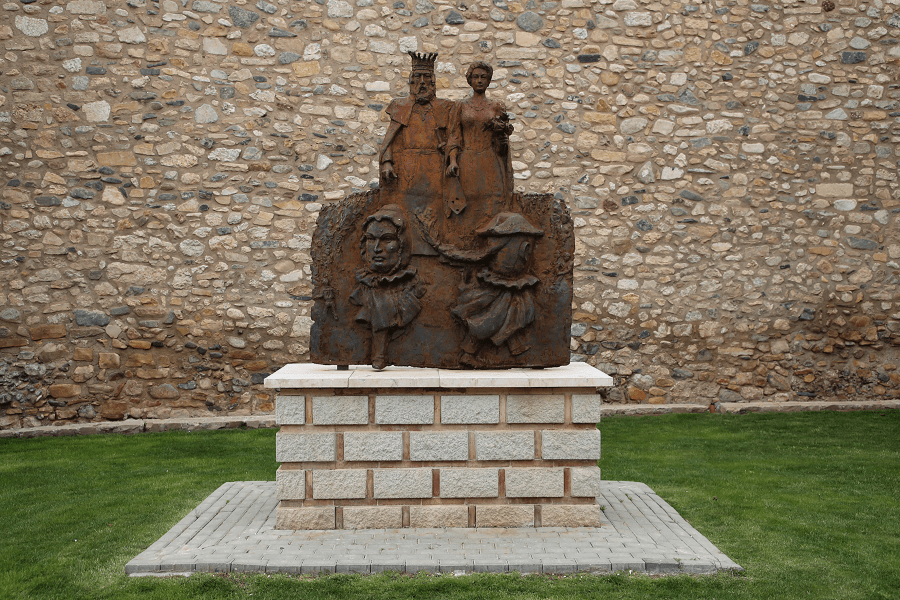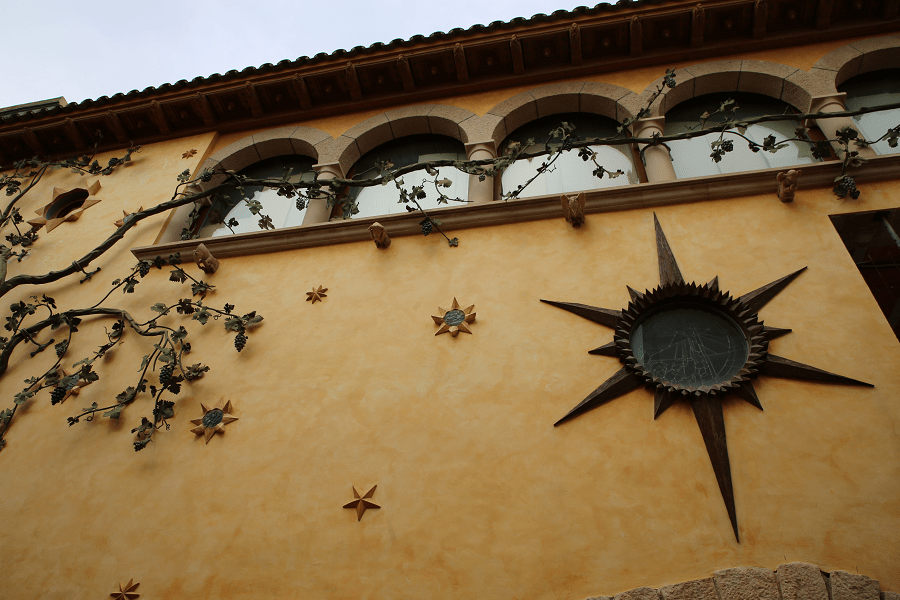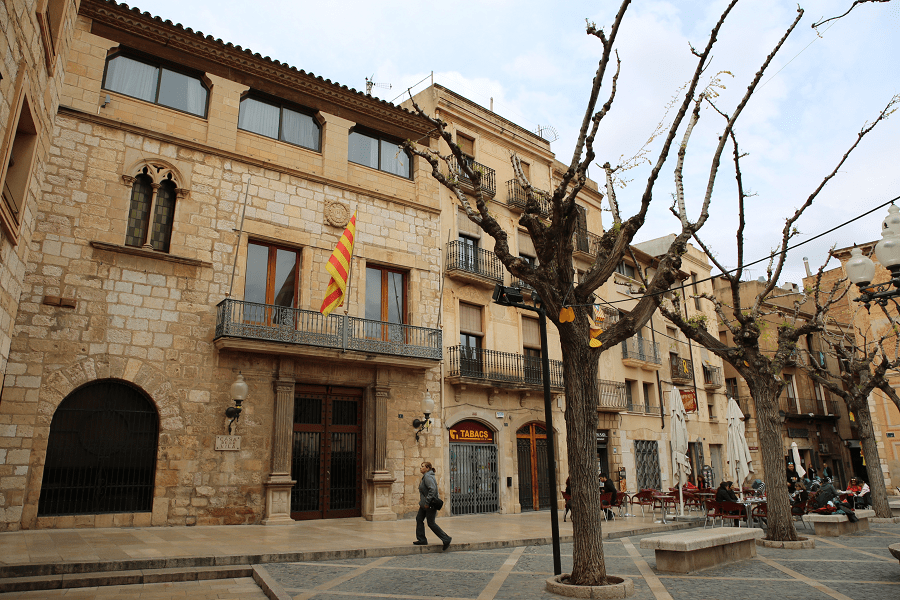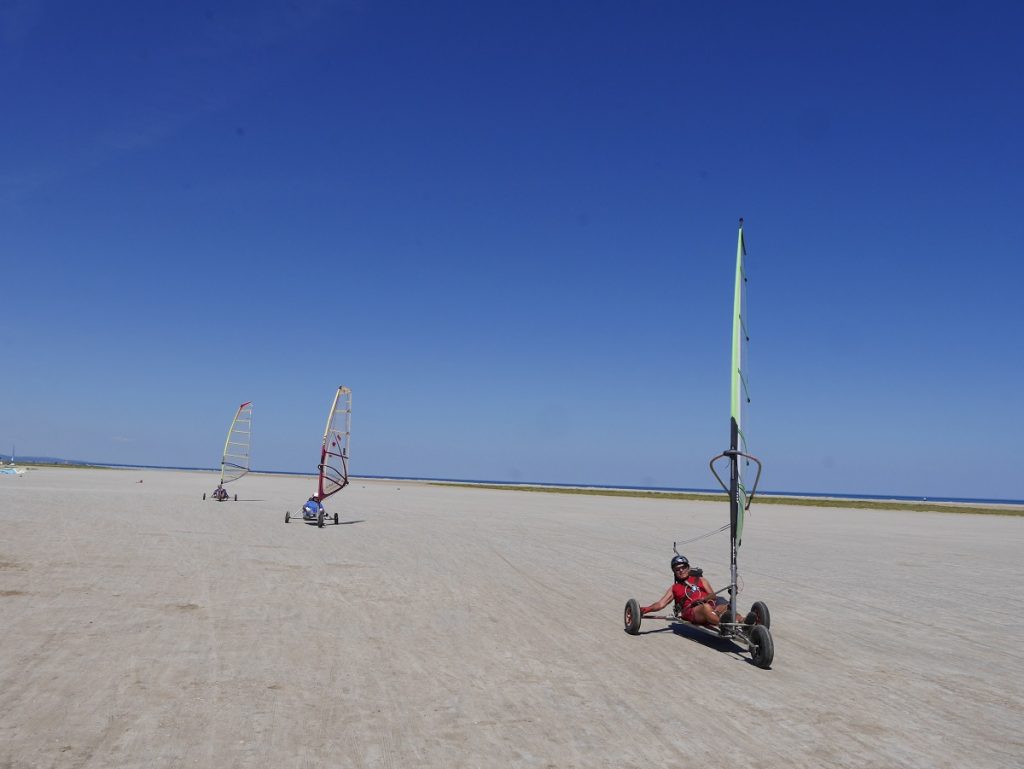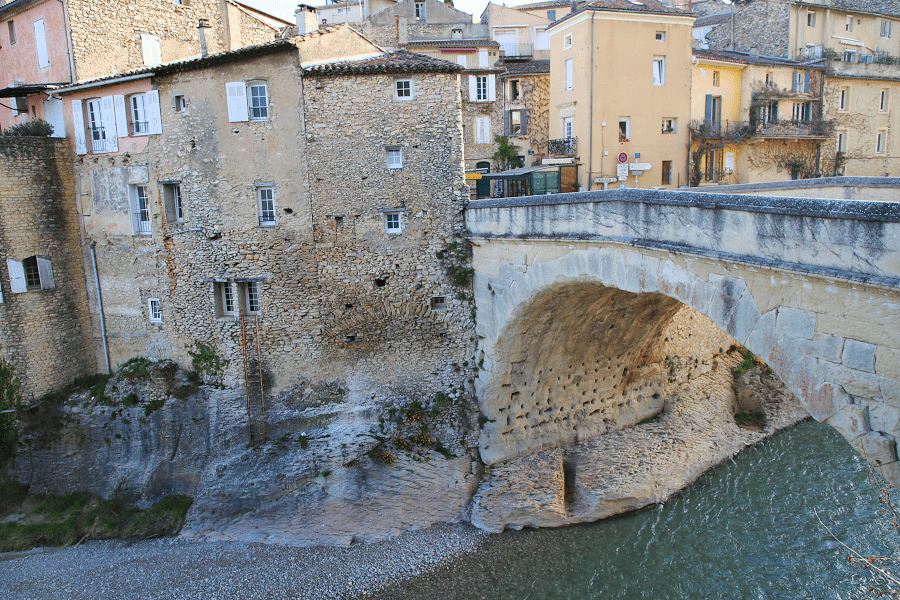Montblanc (cat. Montblanc) is a town and municipality in Spain, Catalonia, capital of the county of Conca de Barberà. It has a population of 7,559 (2018) and with an area of 91.11 km². It is the largest municipality in the region.
The town has the title of Ducal Villa since 1387. The old town was declared a Monumental and Artistic Complex in 1947. In 1998 the cave paintings of the area were declared a World Heritage Site by UNESCO as a site of the Rock Art of the The Mediterranean arch of the Iberian peninsula. Montblanc is located to the south of the region, at the center of a depression formed by the rivers Anguera and Francolí. The municipal territory is delimited, broadly, by the Miramar mountain range and the Prades Mountains.
Etymology
The town owes its name to the hill that is located in the center of the old town, known as the Pla de Santa Bàrbara. This hill (or mont) was not cultivated, since it gave very little fruits and it was considered barren, or albis meaning white in medieval Catalan. Thus came the place name of Montis Albis that originated that of Montblanc.
History
Paleolithic paintings and remains have been found in the mountain area of the municipal district. In total there are 11 sets of cave paintings of a naturist and schematic style (declared a World Heritage Site by UNESCO in 1998), rock cave prints and deposits of the Paleolithic, Neolithic and Bronze Age. See here more history of Monblanc
Geography
Montblanc is the largest municipality in the region because it includes the old territory of Rojals, which is equivalent to 14.14% of the total demarcation. It is located in the southeast of the Conca de Barberà and borders to the north with the Espluga de Francolí, Blancafort, Pira and Barberà de la Conca; to the south with Figuerola del Campo and Valls (with its aggregate of Fontscaldes), of the Alt Camp; to the east it borders Valls, Riba and Mont-ral, also of the Alt Camp, and with Vilaverd, of the Conca de Barberà, which is wedged at the end of Montblanc territory and to the west it limits with Vimbodí and Espluga de Francolí, it also touches in one point with Prades, in the Baix Camp.
The territory is steep in the southwestern part because of the Prades Mountains (Roquerola mountain range, with the Guineu peak, 1,111 meters high), in the old district of Rojals. The Prades Mountains have been included in the Plan of Areas of Natural Interest (PEIN-Pla d’espais d’interès natural). The south-eastern part is closed by the Sierra Carbonaria, with a lower altitude (peak of La Cogulla, 789 m, and the Tossal Gros, 867 m, also included in the PEIN).
Through this mountain range, along the Coll de Lilla, passes the Valls road. The composition of these mountainous areas is basically of triassic materials. The territory of Montblanc is drained by the Francolí river and its tributary, the Anguera river. In the proximity of both rivers, and especially in its confluence, the alluvium and quaternary lands predominate. In these area, several streams and torrents drain, such as the Vall del Francolí river, the branch of Pont de Candí and the streams of Hortènsia and Pira which flow in to the Anguera river.
The municipality of Montblanc includes, apart from the town of Montblanc (head of the district) the towns of Lilla, Rojals, Prenafeta, La Guàrdia dels Prats and Pinetell (or Pinetell de Rojals), the hamlets of Rojalons, La Barceloneta, La Bartra and the Cogullons, as well as several residential areas (Arcades, Horta de Vinyols, Sant Maties and Vilasauva).
Tourism, sights and main places of interest
The town of Montblanc, declared a Monumental and Artistic Complex in 1947, is a medieval town of importance for the number of buildings preserved from this period (13th and 14th centuries). The curtain wall that encloses the whole historic center stands out. The works can be grouped into constructions of religious and civil architecture, either private or public, with palaces and significant houses.
Religious architecture
● The church of Santa Maria la Major, known as the Mountain Cathedral, which stayed unfinished due to the Black Death’s epidemic, is the most representative building in the city. It is of gothic ogival style with a single nave, side chapels and rib-vault. The portal, of Renaissance proportions and ornamentation of baroque style, replaced the primitive gothic one that was destroyed in the year 1651.
● The convent of Sant Francesc de Montblanc was one of the oldest ones in Catalonia and San Francisco de Asís stayed there overnight. The church of the convent is a building of the original Gothic Catalan style, with polychrome wood ceiling, side chapels and apse with rib-vault. In 1414 the Catalan Courts met there. The convent was destroyed in the 19th century. Inside a side baroque chapel of the church there is the town’s tourist office.
● The church of Sant Miquel, where the Corts Catalanes were held. It has a 14th-century polychrome ceiling of great artistic value.
● The Sant Marçal church-hospital, from the 14th century, stands out thanks to its wooden roof held over diaphragmatic arches.
● The old Hospital of Santa Magdalena, outside the town walls, is a building where the models of the last gothic architecture with the Renaissance ones coexist.
● The convent and sanctuary of La Serra is closely linked to the devotion and pilgrimage of the Montblanc, since it has the image of the patron saint of the city of a great artistic value.
● The sanctuary of the Mare de Déu dels Prats, popularly known as the Prats hermitage, in the district of La Guàrdia dels Prats.
● The convent of La Mercè.
● The hermitages of Sant Joan, Sant Josep and the one of Santa Anna (behind the hamlet of Prenafeta)
● The fountain of Ceba.
Civil architecture and public works
● The walled enclosure was built in the days of King Peter the Ceremonious, after the year 1366. It has a perimeter of 1,500 m with the portals of St. Francesc (demolished), Sant Jordi, Sant Antoni (reconstructed), Bové and Castlà; the smaller entrances of St. Marçal and Foradot and 28 towers.
● In the historical center several buildings stand out. The most representative ones are: the stately home of the Royal Palace (occasional residence of the kings of the Crown of Aragon), Josa, Castellví, Alenyà and Castlà Palaces, the mansion of Desclergue and the Casa de la Vila.
● The Jewish Quarter of Montblanc had a cemetery and a synagogue, but today there are only remains of the urban plot.
● The main square, with the Font Major (monumental construction of 1804) and the porches of Cal Malet, where the old stone quarters were located to measure grain. Below the plaza passes the covered torrent of Riuot.
● The old Romanesque bridge (12th century) it maintains its Romanesque structure with its pillars-buttresses, central body and arches.
● The Celler Cooperatiu, a modernist work by Cèsar Martinell, considered one of the cathedrals of Catalan wine.
Museums
● Regional Museum of the Conca de Barberà: Architectural complex formed by two flour mills of medieval times. It showcases hydraulic mill and examples of molds, types of materials and equipment: moles, mechanisms, etc. of the traditional Catalan mills, in particular of the Conca de Barberà region.
● Frederic Marés Art Museum
● Palau Ferré Museum of Art
● Molins de la Vila Museum (cat. Village Mills Museum)
● Museum of Natural History
● Art Interpretation Center of Rupestre de les Muntanyes de Prades
● Local Historical Archive of the Conca de Barberà
Neighborhoods and population centers
At the moment, within the town, two areas can be distinguished: that of the historic center, located within the enclosure of the curtain wall of Montblanc, and the extension located outside the enclosure and built after the fifties and sixties of the 20th century, and which received a strong momentum with the turn of the century.
Traditionally, the town has been divided into seven districts: Sant Miquel, Sant Domènec, Àngels, Sant Roc, Sant Cristòfol, Santa Anna and Santa Tecla. In the 21st century, the Carmen district was added. Outside the curtain wall are the neighborhoods of Montserrat, Santa Clara, Sant Maties, the residential areas of Les Arcades, Sant Joan, Nialó, Horta de Vinyols and the Sòl de l’Horta.
The Ducal Villa also includes the areas of Guardia dels Prats, Lilla, El Pinetell, Prenafeta and Rojals.
Culture and traditions
Montblanc is one of the leaders in Catalonia for traditional folklore. Villagers comment that the festivals have always been the same. You can find there:
● Gegants (cat. Giants). Built in 1864 in Barcelona with stately style. The male Giant holds the founding letter of the Vila and wears a ducal crown while the female Giant is dressed as a noblewoman and has a different hairstyle every year, with hair done at the hairdressing salons of the town. In 1992, a lighter replica was made. They are the stars of the traditional acts and they bring the square alive, especially with the popular pasodoble Amparito Roca dance.
● Nanos They accompany the giants In 1911 they needed a reform. Male ones wore tricorn and female ones colorful coifs and were controlled by a red devil. They reappeared in 1981.
● Ball de bastons. It is a ritual dance to the rhythm of the melody of recorder, where the participants beat hard with sprockets of cart wheels. The first written reference dates to 1734, when they participated in the Corpus of Barcelona, although it is considered to be of high medieval origin. The current group dates back to 1964.
● Kids band of Ball de Bastons. They guarantee the continuity of the adult band. It was created in 1979.
● Cucafera. Mentioned in written records for the first time in 1381. Retrieved in 2016. It is in charge of collecting pacifiers from the children of the village when they become older.
● Mulassa. There used to be a man who mounted it and its head used to be an authentic skeleton. The current one is from 1981 and is carried by four people.
● Àliga (Eagle), documented in 1579. It danced along with the aligots (cat. buzzards), until the Reapers’ War, when they got burned. The eagle ran the same luck in 1811, when it was burned by the French. It was recreated in 1981.
● Dragon of Montblanc it is an authentic protagonist of the correfocs, along with the devils. It also acts during the Festa Major. The one that was burned during the Reapers’ War was from 1586. A new dragon was made in 1981.
● Grallers. In the past there were several groups of grallers. The music of the gralles, the drum and the snare drum make the Àliga, the Mulassa, the Dragon, the Baby Àliga and the Little Dragon dance and it accompanies the Torraires (Montblancs’ castellera).
● Demons. They perform during the correfocs with the Dragon and participate in the Dracum Nocte (Medieval Week). The first performance was on March 3, 1984.
● “Baby Demons”. Participate in the burning of the Carnestoltes during Carnival, it accompanies the flame of Canigó to give way to the night of Sant Joan and at correfoc of Festa Major. It was created in 2007.
● Macers and Flag-bearer. The macers tradition dates back to 1693. The macers are dressed in red gown and white ruff. They accompany the City Hall representative in the official ceremonies and, in the past, they offered water upon entering the church to the municipal authorities.
● Torraires it is a castellera (human towers) group. In the middle of the 19th century there was already a castellera group, which was later divided into two groups: Nova i Vella, who even came to compete with the Xiquets de Valls group. They disappeared with phylloxera and were refounded in 1994.
● Verge de la Serra Music Band. Formed in 1996, with musicians from the Municipal Band and the Band Cornetes and Tambors. They are responsible for making the Giants dance to the rhythm of pasodoble. On designated days, the band also offers concerts to the public, since they do not only play the pasodobles of the Giants.
● Timbales, as the macers they accompany the Town Hall representatives, but they go on horseback and wear a red cape and a beret with a passementerie strip. In 1981 they made the final exit but they were restored again in 1999.
● Armats. They are the Roman soldiers who leave on Good Friday accompanying at all times the image of the Holy Christ of the Congregation of Puríssima Sang de Nostre Senyor Jesucrist. There are 33 armats (like the age of Christ) including cornets, tabors and spears bearers and their respective captains.
● During the Serra’s festivities of 2006, the new folk elements of the Villa were released: the Baby Nanos, the Little Dragon and the Aligot.
● Band of Cornets and Tabors Verge de la Serra – no longer exist.
● Majorettes – no longer exist.
● Devils – they are missing
Legends
● Legend of Saint Jordi. The Catalan tradition places the Legend of Sant Jordi in Montblanc. There is the Sant Jordi Portal in front of which, according to the tradition, Sant Jordi killed the dragon.
● Arrival of the Virgin of Serra. The legend tells the story of the foundation of the Serra Sanctuary.
Main festivals
● JANUARY: Biblical Magi and Fiesta de Sant Antoni (Matança del Porc and Tres Tombs).
● FEBRUARY: Ganga and Carnival Fair.
● MARCH: Calçotades
● APRIL: Feast of the Traginers, Easter Processions and Medieval Week of the Legend of Sant Jordi.
● MAY: Fiestas de Sant Maties.
● JUNE: Corpus Christi Procession, Saint John’s Night and Sardana Aplec.
● JULY AND AUGUST: Every weekend there is the party of a neighborhood or district.
● SEPTEMBER: Festa Major in honor of the Virgin of Serra.
● OCTOBER: Terrània, International Ceramics Fair.
● NOVEMBER: Fairs of Sant Martí.
● DECEMBER: Christmas celebrations.
Gastronomy and restaurants
Visiting Montblanc and walking along its streets and squares is a good excuse to discover the rich variety of typical products that the town offers. Sweet or salty products, wines and cellars to taste in the cellars or in the restaurants will make your stay a good gastronomic experience.
In the butcher’s shops of the town a rich variety of derivative products of the pork elaborated in a home-made way, how they are the cold meat can find, the boiled Catalan sausage, the black sausage, the, etc, sausages whips…
During the first months of the year the restaurants in Montblanc offer the traditional calçotada. It consists on onions cooked in the fire made with vine shoots of vineyard and a typical sauce called romesco and then different kinds of meat.
The cakes, sweet and sugared, they are an indispensable element of the local confectionery. Now they still make following recipes old that the bakers have transmitted of generation in generation. Of among the confectionery they highlight the merlets and montblanquins, two delicious very similar specialities that are some almonds covered with sweet pastry. But not everything is sweet. In the confectionery and ovens of bread of Montblanc you will be able to find the typical cakes of onion or of provision, made according to the ancient tradition.
Main restaurants are situated inside the Old city.
Shopping
Shopping in Montblanc is not a priority on the tourist program. Only on weekends city bazaars and fairs, which traditionally take place on weekends or on some public holidays in the main square, can be of tourist interest. At the fairs, in particular, you can come across exclusive products grown in the region. Among them are some well-known wine and cheese brands in Spain.
Shortest distances
From Barcelona 1 hr 24 min (117 km) via AP-2 and AP-7
From Madrid 5 hr 12 min (514 km) via AP-2 and A-2
From Andorra 2 h 21 min (160 km) via C-14
Main information
Area of the municipality : 91,1 sq. km
Coordinates: 41° 22′ 35″ N, 1° 09′ 50″ E
Population: 7.384
Languages: Spanish, Catalan
Currency: euro
Visa: Schengen
Time: Central European UTC +1



